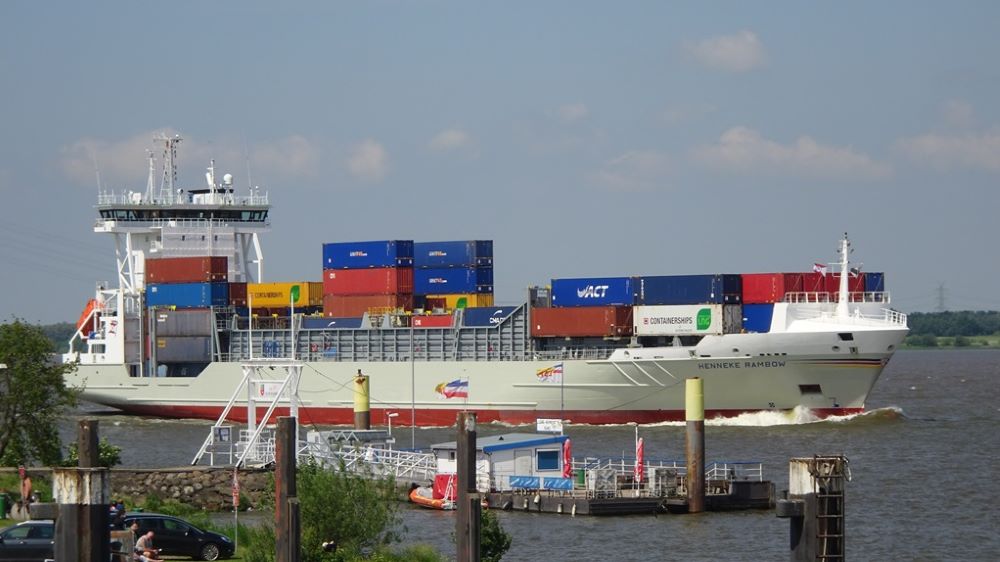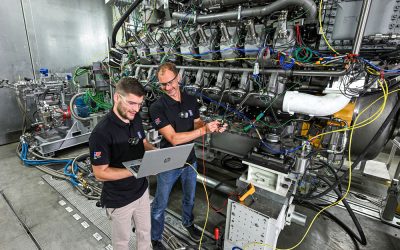Package of optimisation measures leads to substantial efficiency gains on 868TEU Henneke Rambow
“Right now there’s quite a few different things realigning in the industry. This means there’s quite a lot of movement happening with retrofitting from an energy and efficiency perspective,” reflects Jonas Nyberg, Berg Proplulsion’s managing director for advanced solutions.
Like others, the Swedish company is finding a potent combination of regulatory, cultural and economic factors are driving the need for new solutions and more efficient vessels. But while some operators are choosing to invest in new tonnage, most yards have lengthy orderbooks and owners are increasingly attracted by the possibilities of retrofitting ships to improve their competitiveness.
Berg Propulsion believes one segment that can benefit from the latter option is container feeder vessels. “When we apply these three factors to it, it shows a very favourable case for retrofits. Most container feeder vessels being built today are for much higher speeds than they actually operate. A Sietas 168, a very common container vessel, is built for 20-21knots but the average speed is 16knots. We have done retrofits on these vessels that have achieved 20-30% verified fuel savings,” explains Nyberg.
Case in point is Henneke Rambow, an 868TEU feeder owned by Reederei Rambow and chartered to CMA CGM upon which Berg has recently completed a package of optimisation measures. These included replacing the propeller blades with ones hydrodynamically optimised for the ship’s operating profile, upgrading the control system to Berg’s MPC800 propulsion unit with Dynamic Drive and installing a custom-made Network Frequency Stabiliser that means the shaft generator can operate at variable speeds without compromising voltage to the main switchboard. In doing so the vessel is optimised for performance at a lower speed.
The opportunity to demonstrate the possibilities of propulsive retrofitting is one the company has been awaiting for some while, but previously has been thwarted by failing to connect with the right stakeholders. “We went to a technical management company and everyone thought it was a great idea, but it’s the charterer who pays for fuel in the container trade… We had developed a solution but needed regulatory and socio-environmental factors to come into the equation,” says Nyberg.
Berg breaks down a retrofit project into four key areas: hydrodynamics (i.e. propeller blades), control systems upgrades (for better engine protection), power electronics (a variable frequency shaft alternator and batteries) and software solutions. Collectively, the entire package can optimise a vessel for a fraction of the cost of an equivalent newbuilding, which would typically be in the region of US$60million. Notwithstanding advances in hull design and the capability to operate on new fuels the retrofitted vessel will perform to much the same standard.
“When you look at the solutions we put into this field they are the same as those that nowadays you would put into newbuilds. Looking at the newbuild projects we have today there’s an expectation that vessels will be built with far greater capability than there used to be. Of course, it’s driven by the fact there’s a completely different level of awareness about the impact these factors have on consumption and emissions, not to mention the regulatory requirements for newbuilds.”
After a somewhat turbulent dozen years – having been acquired and then sold off again (in 2020) by equipment giant Caterpillar – Berg is now growing quite rapidly under the ownership of Swedish investment group Gula Skrinet. Much of this expansion has been grounded in the burgeoning potential for propulsive optimisation, with another notable achievement being the innovative auxiliary system being supplied for the wind-assisted Neoliner, due for delivery next year (see TNA, Jul/Aug 2023).
With a growing emphasis on just-in-time arrivals Berg is also exploring the potential for greater in-journey optimisation; not only through speed and routing adjustments but also trim adjustments and ensuring the ideal combination of propeller pitch and engine speed. But container ships also spend more than half their time in port and the company anticipates shore power will be an area of focus in efforts towards emissions abatement.
Nyberg comments: “Shore power has so far focused on very big ships such as cruise ships, large container vessels and some larger tankers. We see that the next step will be that it makes its way into medium-sized vessels. It ties into the power electronics side of our offering but there will be a problem with standards not being established, so we will likely not be the integral partner there.”




